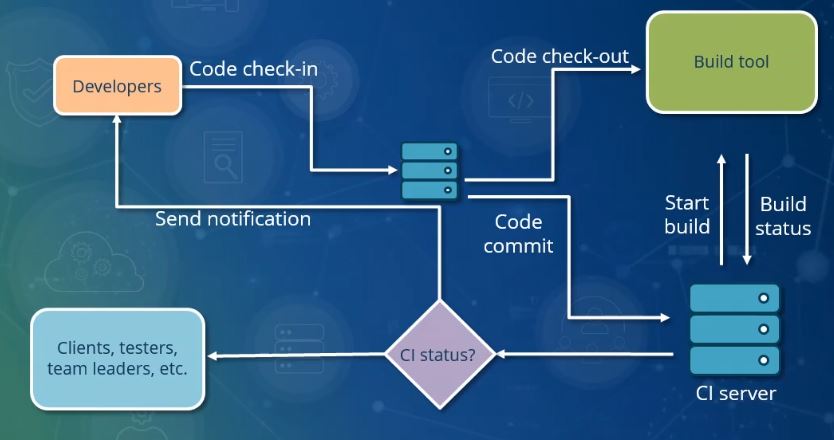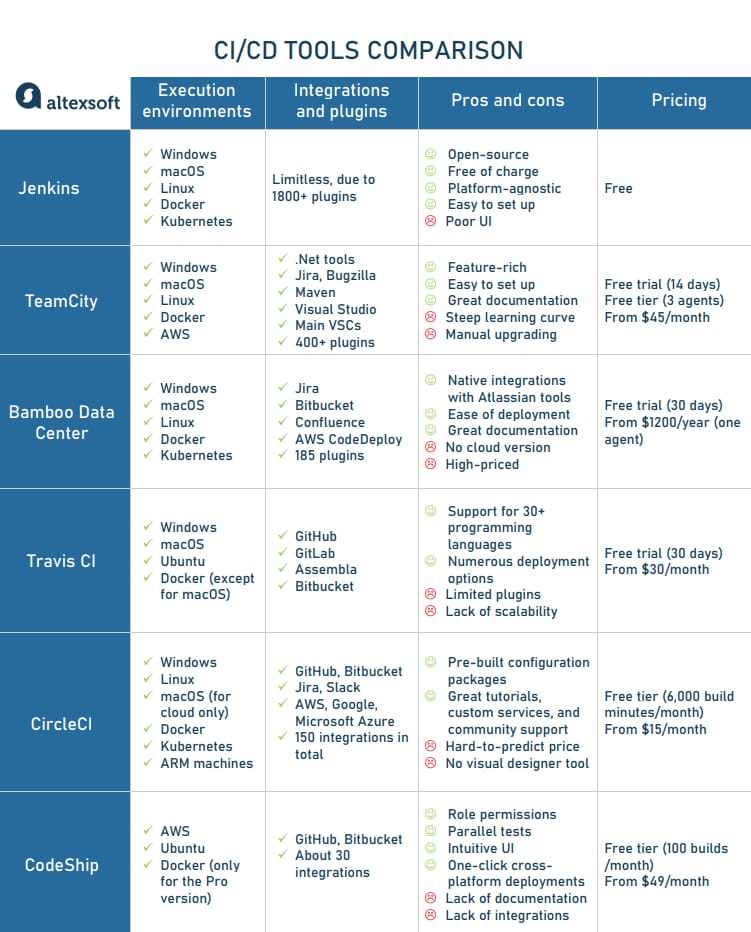Continuous integration and continuous delivery/deployment are intrinsic to DevOps. Here’s a brief overview of how these practices help in the software development cycle.
Understanding CI/CD
CI/CD is a popular term for continuous integration (CI) and continuous delivery (CD). It is a set of practices that automate the software development process, and aim to streamline and accelerate software delivery from development to production effectively and faster.
Let us demystify a few terms:
Continuous Integration (CI)
CI frequently merges code changes into a remote or shared repository such as GitLab, GitHub, or Bitbucket. Every code change in the remote repository triggers an automated build and test jobs. This helps to find issues early in the software development cycle and recover faster from them.
Here is an image that visualizes Continuous Integration:

Continuous Delivery (CD)
Continuous delivery is the next step after CI and enables automation in non-production environments. It ensures that the application is always ready for deployment.
Continuous Deployment (CD)
Continuous deployment is a more automated approach that helps to automate the delivery of code changes to a production environment.
CI and CD provide multiple advantages for project teams in most organisations. By automating the code quality check, build, test, and deployment processes, CI/CD pipelines help to reduce the time it takes to deliver new features and bug fixes. They enable faster failure recovery with less time and money investment. Human intervention in the application lifecycle management cycle is minimized, allowing development teams to focus on more critical tasks, leading to better productivity and happier team members.
Here is an image that explains CI/CD Pipelines and their benefits:

A CI/CD pipeline is a series of automated steps that code must go through — from development to deployment — in a production environment. It usually includes the steps of application lifecycle management.
Implementing CI/CD in an organization, business units, or projects can be challenging. It requires a cultural shift towards automation and collaboration by breaking traditional silos.
Let’s understand the difference between Jenkins, GitLab CI, and Azure DevOps:
- Jenkins
- GitLab CI
- Azure DevOps
Here is an image showcasing the comparison of Continuous Integration and Delivery Tools - TeamCi:





















